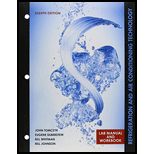
Lab Manual for Tomczyk/Silberstein/ Whitman/Johnson’s Refrigeration and Air Conditioning Technology, 8th
8th Edition
ISBN: 9781305578708
Author: John Tomczyk, Eugene Silberstein, Bill Whitman, Bill Johnson
Publisher: Cengage Learning
expand_more
expand_more
format_list_bulleted
Concept explainers
Textbook Question
Chapter 10, Problem 8RQ
Two or more refrigerants combined together to createanother refrigerant is referred to as a(n) ________.
Expert Solution & Answer
Trending nowThis is a popular solution!

Students have asked these similar questions
The volume of 1 kg of helium in a piston–cylinder device is initially 5 m3. Now helium is compressed to 3 m3 while its pressure is maintained constant at 130 kPa. Determine the initial and final temperatures of helium as well as the work required to compress it, in kJ. The gas constant of helium is R = 2.0769 kJ/kg·K.
The initial temperature of helium is K.
The final temperature of helium is K.
The work required to compress helium is kJ.
A piston-cylinder device initially contains 0.4 kg of nitrogen gas at 160 kPa and 140°C. Nitrogen is now expanded isothermally to a
pressure of 80 kPa. Determine the boundary work done during this process. The properties of nitrogen are R= 0.2968 kJ/kg-K and k=
1.4.
N₂
160 kPa
140°C
The boundary work done during this process is
KJ.
!
Required information
An abrasive cutoff wheel has a diameter of 5 in, is 1/16 in thick, and has a 3/4-in bore. The wheel weighs 4.80 oz and
runs at 11,700 rev/min. The wheel material is isotropic, with a Poisson's ratio of 0.20, and has an ultimate strength of 12
kpsi.
Choose the correct equation from the following options:
Multiple Choice
о
σmax=
(314) (4r2 — r²)
-
о
σmax = p² (3+) (4r² + r²)
16
σmax =
(314) (4r² + r²)
σmax =
(314) (4² - r²)
Chapter 10 Solutions
Lab Manual for Tomczyk/Silberstein/ Whitman/Johnson’s Refrigeration and Air Conditioning Technology, 8th
Ch. 10 - How can liquid refrigerant be added to the...Ch. 10 - How is the refrigerant cylinder pressure kept...Ch. 10 - Why does the refrigerant pressure decrease in a...Ch. 10 - What type of equipment normally has the...Ch. 10 - Why are digital scales preferred over other types...Ch. 10 - How does a graduated cylinder account for the...Ch. 10 - What methods besides weighing and measuring are...Ch. 10 - Two or more refrigerants combined together to...Ch. 10 - Define temperature glide, and give examples of...Ch. 10 - A portion of a refrigerant blend that is...
Ch. 10 - What is the main difference between a zeotropic...Ch. 10 - What is meant by "restricting" liquid refrigerant...Ch. 10 - What causes fractionation in certain refrigerant...Ch. 10 - When should a service technician use the...Ch. 10 - A service technician is charging an...Ch. 10 - A technician takes the following readings on an...
Knowledge Booster
Learn more about
Need a deep-dive on the concept behind this application? Look no further. Learn more about this topic, mechanical-engineering and related others by exploring similar questions and additional content below.Similar questions
- I don't know how to solve thisarrow_forwardI am not able to solve this question. Each part doesn't make sense to me.arrow_forwardExercises Find the solution of the following Differential Equations 1) y" + y = 3x² 3) "+2y+3y=27x 5) y"+y=6sin(x) 7) y"+4y+4y = 18 cosh(x) 9) (4)-5y"+4y = 10 cos(x) 11) y"+y=x²+x 13) y"-2y+y=e* 15) y+2y"-y'-2y=1-4x³ 2) y"+2y' + y = x² 4) "+y=-30 sin(4x) 6) y"+4y+3y=sin(x)+2 cos(x) 8) y"-2y+2y= 2e* cos(x) 10) y+y-2y=3e* 12) y"-y=e* 14) y"+y+y=x+4x³ +12x² 16) y"-2y+2y=2e* cos(x)arrow_forward
- Qu. 15 What are the indices for the Plane 1 drawn in the following sketch? Qu. 16 What are the Miller indices for the Plane shown in the following cubic unit cell? this is material engineering please show all workarrow_forwardI do not understand how to approach this question. I tried to answer it but I kept getting it incorrect.arrow_forward(read image)arrow_forward
arrow_back_ios
SEE MORE QUESTIONS
arrow_forward_ios
Recommended textbooks for you
 Refrigeration and Air Conditioning Technology (Mi...Mechanical EngineeringISBN:9781305578296Author:John Tomczyk, Eugene Silberstein, Bill Whitman, Bill JohnsonPublisher:Cengage Learning
Refrigeration and Air Conditioning Technology (Mi...Mechanical EngineeringISBN:9781305578296Author:John Tomczyk, Eugene Silberstein, Bill Whitman, Bill JohnsonPublisher:Cengage Learning

Refrigeration and Air Conditioning Technology (Mi...
Mechanical Engineering
ISBN:9781305578296
Author:John Tomczyk, Eugene Silberstein, Bill Whitman, Bill Johnson
Publisher:Cengage Learning
Physics - Thermodynamics: (21 of 22) Change Of State: Process Summary; Author: Michel van Biezen;https://www.youtube.com/watch?v=AzmXVvxXN70;License: Standard Youtube License